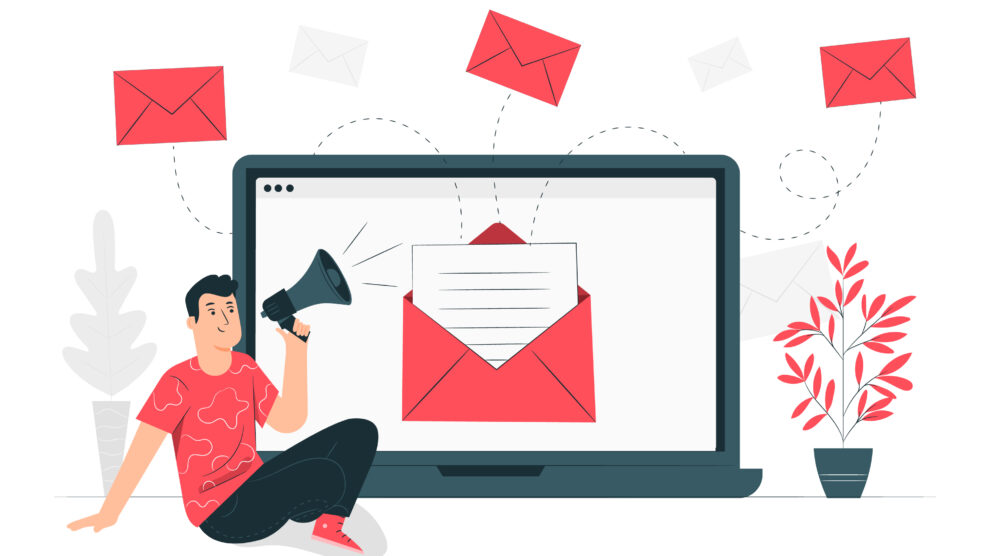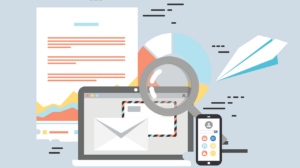Starting your new business is an exciting time full of opportunities to meet new people and create business contacts. An email marketing campaign allows this process to unfold quickly and efficiently. Use this quick set-up guide to help you get your email marketing up and running in just five easy steps.
1. Define Goals to Choose Provider
Defining your goals is important because it will help you choose the perfect email provider, based on your needs. Think about the size of your audience. A brick-and-mortar business may only need tens of thousands of contacts, but an online business may need hundreds of thousands. Follow these steps to help choose your provider:
- Determine how many people you foresee on your list.
- Decide how many and what type of emails you will send.
- Next, look at pricing to find something in your range.
- Finally, be sure that there is an available option to buy up into the next level as your business grows.
- Compare these categories for all possible providers to find your perfect match.
2. Build and Segment Your List
It is important to segment your list of contacts so you can target emails based on their needs. You should be collecting email addresses in various ways. Use your website, social media and events to gather emails. Also, if you own a brick-and-mortar business, be sure to ask for email addresses in every transaction at the register. Follow these steps to build and segment your list:
- Create ways to capture email on social media. You can offer a free one-page PDF to make this simple.
- Schedule at least one event per quarter in your local area. Provide a door prize and be sure that people provide an email address to sign up for the drawing.
- Always ask for email addresses during transactions. They can certainly say no, but many will sign up, especially if you offer a coupon.
- Your email address provider will have automations available that will sort your customers into categories based on how they sign-up. Use this feature to target your emails to the needs of the customers.
- Always be sure to let the customer know that when they provide an email address to you, they are giving you permission to send them emails.
3. Develop a Strategy for the Content of Your Emails
It is important to develop a strategy as well as a general schedule of your email content. This not only helps you know exactly what kind of email you will be writing but also helps to be sure you are targeting customers’ needs. Follow the steps to develop a content strategy:
- Look at your segmentations. Perhaps you collected email addresses from social media by providing a PDF. Use the same topic in the first few emails that are directed to this group. If they signed up at the register, tell them more about what you offer in your store and provide a coupon. If they signed up at an event, be sure to let them know which events you will be attending in the future. By providing each group with a tailored email, you are more likely to grab their attention. If an email becomes too lengthy, they may not read it.
- Decide how often you want to send emails and put them on a calendar. Regular emails get the most attention.
- Brainstorm a list of ideas for each segmentation group. Jot these down on the calendar so you can see the overview of a given month in front of you.
4. Create Content for Your Emails
It is important to create content that is compelling to your audience so they will continue to open your email and become customers. Follow these steps to create awesome content:
- Get to know your customers, what they love, what they hate, why they buy your product or service, etc. Know who you are writing to.
- Analyze the plan you laid out above. Would you be interested in reading those emails? If not, definitely tweak the topics. Make sure the ideas reflect your business goals and be sure they provide value to the customer.
- Make some content for social media that will match the content in your emails. Deliver them on social media at the same time that you are delivering them by email. Add “sign up for emails to learn more about this topic” in your social post.
5. Use Analytics to Test Email Efficacy
It is important to test email efficacy to know that you are reaching your audience and providing them with value. Follow these steps to analyze your email efficacy:
- Look at each segmentation that you set up to see how many opens you are getting. You want to see an increase in this percentage as time goes on.
- Set new goals for reach based on this information.
- Create and deliver new content to test. Be sure to continue to evaluate the analytics to see which type of content works best for each segmentation group.
Any time you feel your email marketing is not going as well as you had hoped, go back and complete steps three through five. Your marketing will evolve with your business. This is a continual process, but will surely provide value to your customers and to your business.





